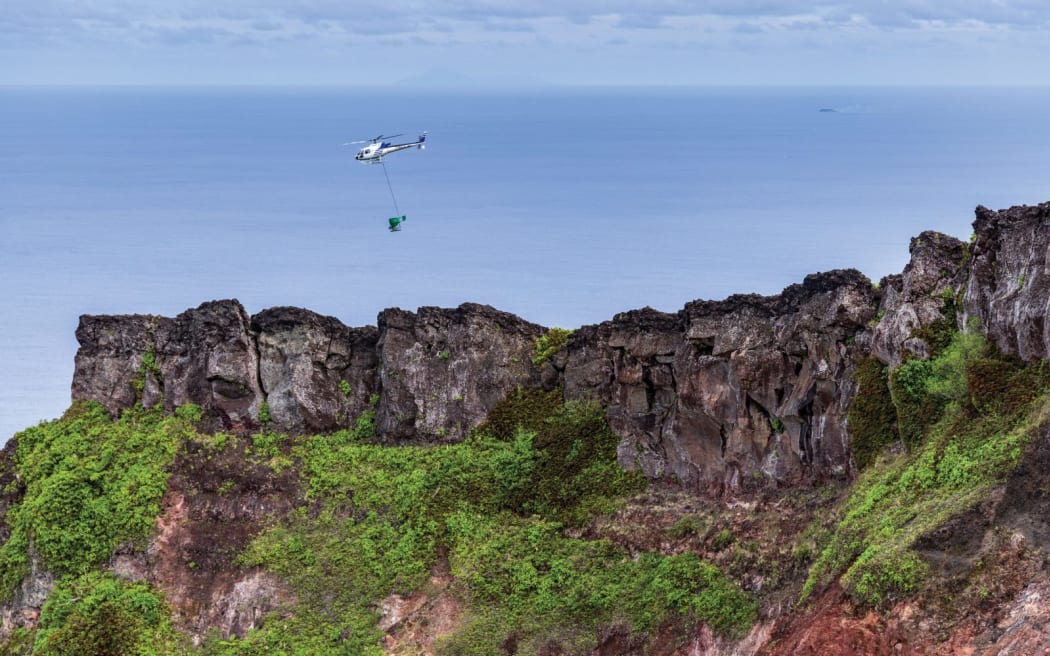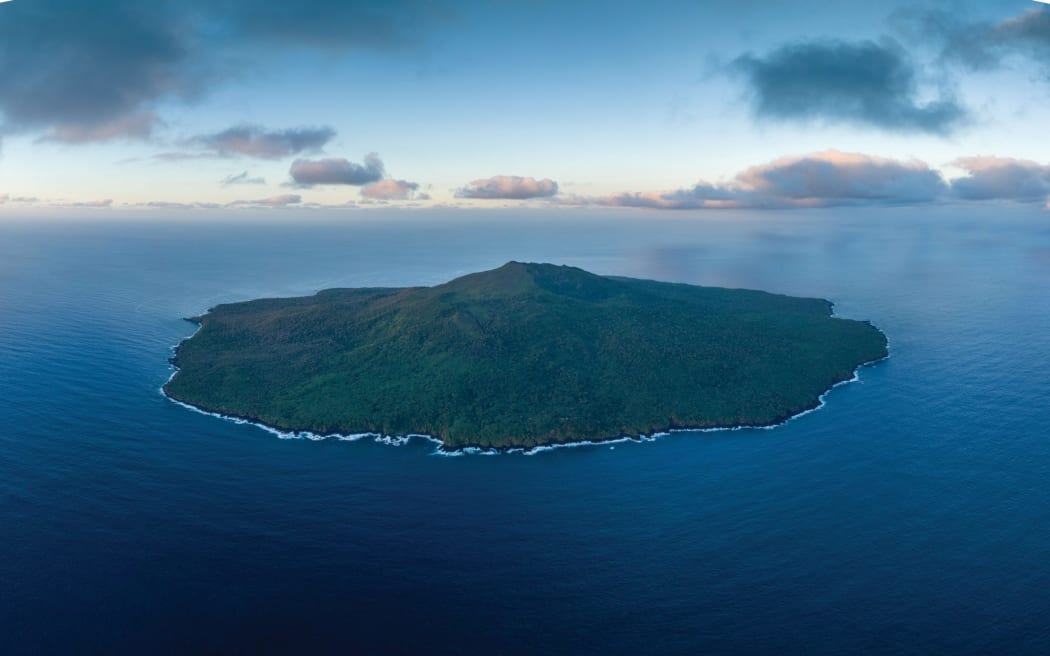
Pilot Davin Mudford drops bait around the crater of Late Island in Tonga. In the distance at right is Home Reef, a steaming active volcano that recently emerged from the sea. On the horizon lie two more volcanic islands, Kao and Tofua. Photo: © Richard Robinson
Follow Our Changing World on Apple Podcasts, Spotify, iHeartRADIO or wherever you listen to your podcasts
Rat eradication from islands is a team sport. It’s not a competition – but if it were, New Zealand would surely be up there. That’s why on most pest removal teams around the world you can probably find one or two Kiwis right in the thick of things.
It takes a village
A team lined up to complete the rat eradication project for the island of Late in the kingdom of Tonga is no different. The New Zealand Department of Conservation is supporting the operation and have provided some skilled staff. The helicopter team (pilot, engineer, ground crew) are all Kiwi too.
They’re joined by a project manager from the NGO Island Conservation, and Tongan conservationists from the national environment department.
Years of feasibility studies, finding funding, planning and logistics have come down to this – a second, and final, aerial application of poisoned bait across the island.
Island paradise
It may not be what you picture when you think of a tropical island, but its jagged basalt cliffs and remoteness has made volcanic Late a potential wildlife haven.
Here you can find the Tongan whistler and ground dove, two rare birds on the IUCN red list of threatened species. And it has the habitat needed for the malau – the Tongan megapode – to breed. Malau don’t incubate eggs by sitting on them, instead they bury them in warm volcanic soils and sands, and Late’s smoking surface is perfect.
Rat eradications elsewhere have allowed forests to rejuvenate, land birds to rebound and seabirds to return. The bird guano ripples the effect out further – feeding the coral reefs and allowing nearby ocean ecosystems to flourish.
Science journalist Kate Evans joins the team on the last day of bait spreading, in what they hope will be the first day of a bright future for the island and its inhabitants.

The uninhabited Late Island is home to one of the best and least-disturbed native forests in Tonga. Photo: © Richard Robinson
Learn more:
-
Read the accompanying New Zealand Geographic article by Kate Evans, with photography by Richard Robinson.
-
Listen to previous episodes of Voice of Tangaroa.
-
Listen to this Our Changing World episode about the success of rat control in protecting the Rarotonga flycatcher, kākerōri, in the Takitumu Conservation Area on the Cook Islands.
-
For more on pest control and eradication watch or listen to the multi award winning Fight for the Wild video documentary and podcast about Predator Free 2050 in Aotearoa.

Photo: NZ On Air
Voice of Tangaroa is a joint production between RNZ’s Our Changing World and New Zealand Geographic.
Reporting for this series is Public Interest Journalism funded through NZ On Air. You can learn more and read the articles for free at www.nzgeo.com/seas. The Pacific Regional Invasive Species Management Support Service supported travel costs for this story.

